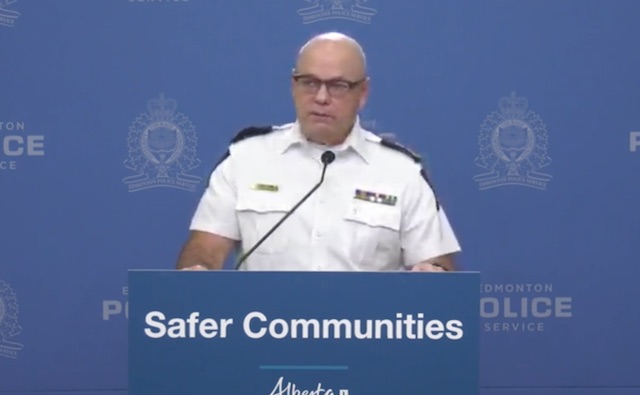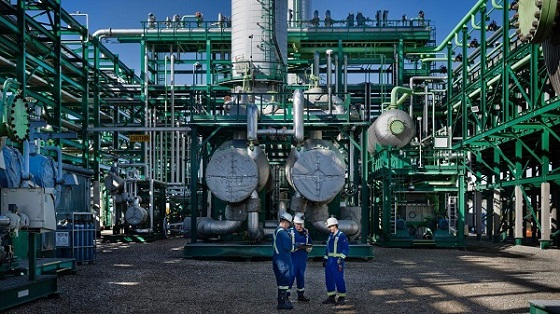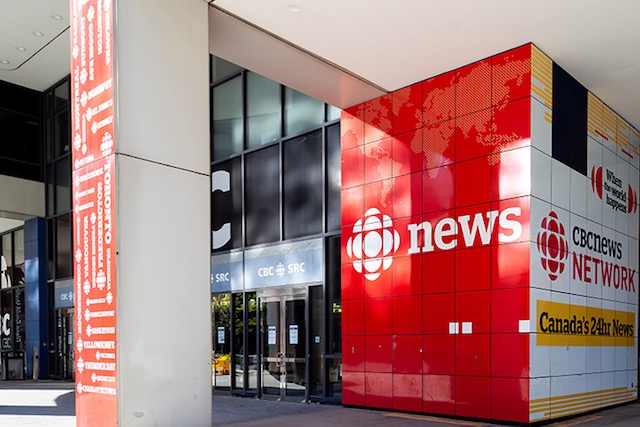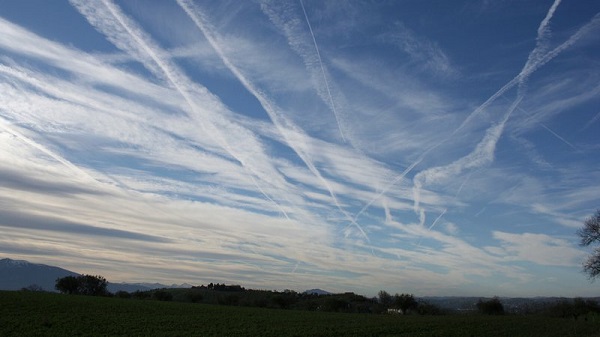Alberta
“We can no longer watch our city decay” EPS Chief Dale McFee on province’s “zero tolerance for crime” initiative

Zero tolerance for crime
New targeted prosecution units and stricter bail protocol will make offenders accountable for their actions and better protect Albertans from violent criminal activity.
Albertans deserve to feel safe and protected from repeat violent offenders, which is why the province is introducing new measures to make sure Albertans feel secure and protected in their communities.
Targeted prosecution units in Alberta’s major urban centres will help address deteriorating safety and keep Albertans safe from those who commit violent crimes. The Alberta Crown Prosecution Service (ACPS) will create teams with expertise to focus on the increased level of crime and the prosecution of violent criminals in Edmonton and Calgary. Prosecutors on these teams will work with law enforcement to focus on specific issues affecting these communities, including drug houses and available social supports, and how these factors affect the amount and type of crime occurring.
“The position of the Alberta government is absolutely clear: there is no safe haven in Alberta for criminals. These changes add to our existing efforts to make sure all criminals, especially repeat violent offenders, are held accountable for their actions.”
Changes to the bail practice protocol for Crown prosecutors will prioritize public safety and take a tough approach on crime caused by repeat violent offenders and gang activity. The protocol provides guidance to prosecutors to seek to detain any accused who is a threat to public safety, especially repeat violent offenders, unless the risk to public safety can be addressed by bail conditions. Prosecutors must evaluate the risk that the accused will commit another offence if released.
In addition, the attorney general is terminating the triage practice protocol, which has been met with public concern since it came into effect in 2017. Eliminating this protocol will better address violent crimes in the community and ensure all viable charges are prosecuted. This change is possible through government investments in the ACPS, which give the prosecutors resources to fully prosecute all matters involving violence.
“In the absence of needed bail reform from the federal government, Alberta is taking a zero-tolerance approach to ensure citizens are safe and secure in their communities. Violence, social disorder and open-air drug use is unacceptable, and we will do everything in our power to take back our streets and ensure they’re safe for Albertans.”
These measures build on several actions Alberta’s government is taking to improve public safety, including increased investments in the Alberta Sheriffs, additional funding to hire 100 more street-level police officers in Edmonton and Calgary, and a $5-million grant to each city to improve public safety on their transit networks.
“The criminal activity and disorder that is happening on our city streets is truly devastating. I am pleased by the changes being proposed by the minister of justice and the new approach of Edmonton Police Service to keep public spaces safe. These interventions are important to stabilize the situation while we continue to work together on long-term solutions.”
“There is no question that Edmontonians are concerned about the condition of their city’s public spaces, with open-air drug use and associated crime and violence a top issue. We have many government and community partners we lean on to support those impacted by mental health, addiction and victimization, and will continue to do so, but the EPS is taking a clear stance on the criminality and disorder being directly fed by the drug trade.”
Together, these initiatives will help strengthen the Alberta justice system and the ability to prosecute crimes and keep repeat violent offenders off the street.
Quick facts
- Investments in the Alberta Crown Prosecution Service include the addition of 50 new trial prosecutor positions since 2017.
- Public concern about the triage practice protocol introduced in 2017 resulted in some prosecutions not proceeding even if they were in the public interest and had a reasonable likelihood of conviction.
- Alberta is providing funding for 100 new front-line police officers in Calgary and Edmonton – 50 in each city.
- The Alberta Transit Cleanup Grant is providing Edmonton and Calgary with $5 million each for initiatives that create a safer, more welcoming environment for transit riders.
- In February 2023, the Alberta Sheriffs entered into an agreement with the Edmonton Police Service (EPS) to deploy 12 sheriffs for a 15-week pilot project to address public safety and social disorder in the downtown core. In response to a request from EPS, 10 sheriffs remain deployed with EPS until the end of the year.
Alberta
Cross-Canada NGL corridor will stretch from B.C. to Ontario

Keyera Corp.’s natural gas liquids facilities in Fort Saskatchewan. Photo courtesy Keyera Corp.
From the Canadian Energy Centre
By Will Gibson
Keyera ‘Canadianizes’ natural gas liquids with $5.15 billion acquisition
Sarnia, Ont., which sits on the southern tip of Lake Huron and peers across the St. Clair River to Michigan, is a crucial energy hub for much of the eastern half of Canada and parts of the United States.
With more than 60 industrial facilities including refineries and chemical plants that produce everything from petroleum, resins, synthetic rubber, plastics, lubricants, paint, cosmetics and food additives in the southwestern Ontario city, Mayor Mike Bradley admits the ongoing dialogue about tariffs with Canada’s southern neighbour hits close to home.
So Bradley welcomed the announcement that Calgary-based Keyera Corp. will acquire the majority of Plains American Pipelines LLP’s Canadian natural gas liquids (NGL) business, creating a cross-Canada NGL corridor that includes a storage hub in Sarnia.
“As a border city, we’ve been on the frontline of the tariff wars, so we support anything that helps enhance Canadian sovereignty and jobs,” says the long-time mayor, who was first elected in 1988.
The assets in Sarnia are a key piece of the $5.15 billion transaction, which will connect natural gas liquids from the growing Montney and Duvernay plays in B.C. and Alberta to markets in central Canada and the eastern U.S. seaboard.
NGLs are hydrocarbons found within natural gas streams including ethane, propane and pentanes. They are important energy sources and used to produce a wide range of everyday items, from plastics and clothing to fuels.
Keyera CEO Dean Setoguchi cast the proposed acquisition as an act of repatriation.
“This transaction brings key NGL infrastructure under Canadian ownership, enhancing domestic energy capabilities and reinforcing Canada’s economic resilience by keeping value and decision-making closer to home,” Setoguchi told analysts in a June 17 call.
“Plains’ portfolio forms a fully integrated cross Canada NGL system connecting Western Canada supply to key demand centres across the Prairie provinces, Ontario and eastern U.S.,” he said.
“The system includes strategic hubs like Empress, Fort Saskatchewan and Sarnia – which provide a reliable source of Canadian NGL supply to extensive fractionation, storage, pipeline and logistics infrastructure.”
Martin King, RBN Energy’s managing director of North America Energy Market Analysis, sees Keyera’s ability to “Canadianize” its NGL infrastructure as improving the company’s growth prospects.
“It allows them to tap into the Duvernay and Montney, which are the fastest growing NGL plays in North America and gives them some key assets throughout the country,” said the Calgary-based analyst.
“The crown assets are probably the straddle plants in Empress, which help strip out the butane, ethane and other liquids for condensate. It also positions them well to serve the eastern half of the country.”
And that’s something welcomed in Sarnia.
“Having a Canadian source for natural gas would be our preference so we see Keyera’s acquisition as strengthening our region as an energy hub,” Bradley said.
“We are optimistic this will be good for our region in the long run.”
The acquisition is expected to close in the first quarter of 2026, pending regulatory approvals.
Meanwhile, the governments of Ontario and Alberta are joining forces to strengthen the economies of both regions, and the country, by advancing major infrastructure projects including pipelines, ports and rail.
A joint feasibility study is expected this year on how to move major private sector-led investments forward.
Alberta
Alberta school boards required to meet new standards for school library materials with regard to sexual content

Alberta’s government has introduced new standards to ensure school library materials are age-appropriate.
School libraries should be safe and supportive places where students can learn and explore without being exposed to inappropriate sexual content. However, in the absence of a consistent standard for selecting age-appropriate library materials, school boards have taken different approaches, leading to concerns about safeguards in place.
In response to these concerns, and informed by feedback from education partners and the public, Alberta’s government has created standards to provide school boards with clear direction on the selection, availability and access to school library materials, such as books.
“Our actions to ensure that materials in school libraries don’t expose children to sexual content were never about banning books. These new standards are to ensure that school boards have clear guidance to ensure age-appropriate access to school library materials, while reflecting the values and priorities of Albertans.”
The new standards set clear expectations for school library materials with regard to sexual content and require school boards to implement policies to support these standards.
Standards for school library materials
Under the new standards, school libraries are not permitted to include library materials containing explicit sexual content. Non-explicit sexual content may be accessible to students in Grade 10 and above, provided it is age-appropriate.
“Protecting kids from explicit content is common sense. LGBTQ youth, like all children, deserve to see themselves in stories that are age-appropriate, supportive and affirming – not in material that sexualizes or confuses them.”
School boards must also regularly review their school library collections, publish a full list of available materials and ensure that a staff member supervises students’ access to school library materials. School boards will have to remove any materials with explicit sexual content from their school libraries by October 1.
School board policies and procedures
All school boards must have publicly available policies that align with the new standards for selecting and managing library materials by January 1, 2026. School boards can either create new policies or update existing ones to meet these requirements.
These policies must outline how school library materials are selected and reviewed, how staff supervise students’ access throughout the school day, and how a student, parent, school board employee or other member of the school community can request a review or removal of materials in the school library. School boards are also required to clearly communicate these policies to employees, students and parents before January 2026.
“A robust, grade- and age-appropriate library catalogue is vital for student success. We welcome the ministry’s initiative to establish consistent standards and appreciate the ongoing consultation to help craft a plan that will serve our families and communities well.”
“Red Deer Public Schools welcomes the new provincial standards for school library materials. Our division is committed to maintaining welcoming, respectful learning spaces where students can grow and thrive. Under the new standards for school libraries, we remain dedicated to providing learning resources that reflect our values and support student success.”
Quick facts
- The new standards will apply to public, separate, francophone, charter and independent schools.
- The ministerial order does not apply to municipal libraries located within schools or materials selected for use by teachers as learning and teaching resources.
- From May 26 to June 6, almost 80,000 people completed an online survey to provide feedback on the creation of consistent standards to ensure the age-appropriateness of materials available to students in school libraries.
Related information
- Ministerial Order
- School library standards engagement
- Reference Materials: Content warning: this document contains graphic content that may be disturbing to viewers and is not appropriate for young viewers. Viewer discretion is advised.
-

 Crime1 day ago
Crime1 day agoSweeping Boston Indictment Points to Vast Chinese Narco-Smuggling and Illegal Alien Labor Plot via Mexican Border
-

 Alberta2 days ago
Alberta2 days agoAlberta school boards required to meet new standards for school library materials with regard to sexual content
-

 International1 day ago
International1 day agoSupport for the Ukraine war continues because no one elected is actually in charge.
-

 Business1 day ago
Business1 day agoTrump slaps Brazil with tariffs over social media censorship
-

 Alberta6 hours ago
Alberta6 hours agoCross-Canada NGL corridor will stretch from B.C. to Ontario
-

 Business1 day ago
Business1 day agoCBC six-figure salaries soar
-

 Environment2 days ago
Environment2 days agoEPA releases report on chemtrails, climate manipulation
-

 National13 hours ago
National13 hours agoWomen and girls beauty pageant urges dismissal of transgender human rights complaint




